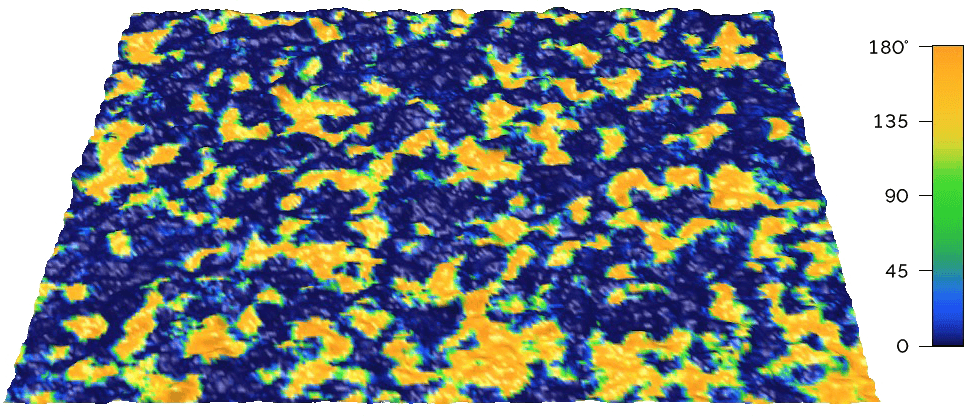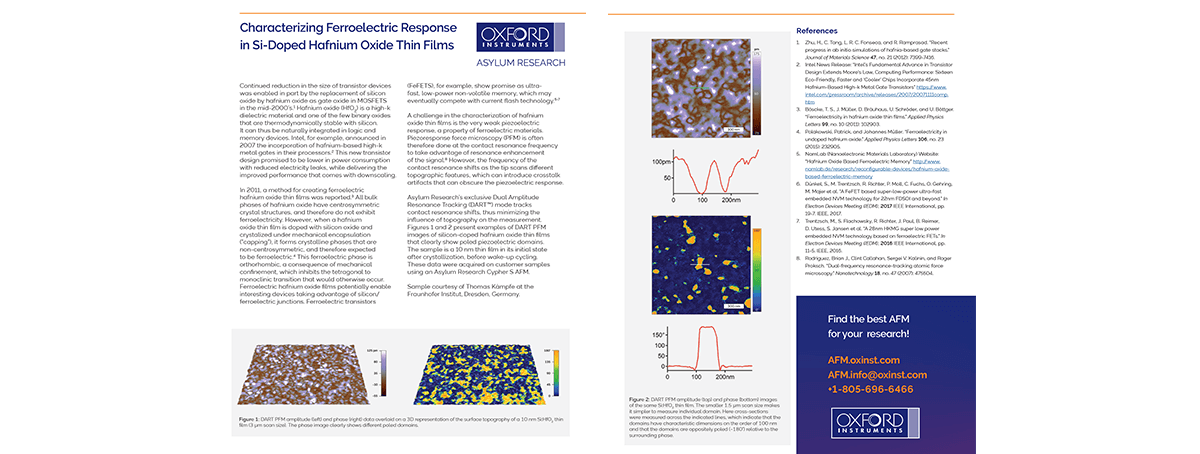22 Apr
Material science innovations are critical to the semiconductor industry’s efforts to make more powerful and more energy efficient processors and data storage devices. Hafnium oxide is one such material that has already been adopted in some new devices. It is one of the few binary oxides that are thermodynamically stable with silicon and can be used as a high-k dielectric material. More recently, it was discovered that hafnium oxide could be deposited as a ferroelectric thin film by doping it with silicon and mechanically “capping” the film. This is a promising material for next-generation devices that take advantage of silicon/ferroelectric junctions such as ultra-fast, low-power ferroelectric transistors (FeFETS).

Image caption: This DART PFM phase image shows differently poled ferroelectric domains in a silicon-doped hafnium oxide thin film across a 3 μm scan size.
The new application note demonstrates how Asylum Research atomic force microscopes (AFMs) can be used to characterize ferroelectric hafnium oxide thin films using piezoelectric response force microscopy (PFM). Ferroelectric materials typically exhibit an extremely small piezoelectric response that can be difficult to measure with conventional PFM. However, Asylum Research’s exclusive Dual Amplitude Resonance Tracking (DART) technology greatly increases the sensitivity of PFM measurements while avoiding measurement artifacts that are common in conventional PFM. This capability is unique to Asylum Research and available on all MFP-3D, Cypher, and Jupiter AFM models.
For more information see https://afm.oxinst.com/Hf-oxide
 DOWNLOAD THE APP NOTE
DOWNLOAD THE APP NOTE

